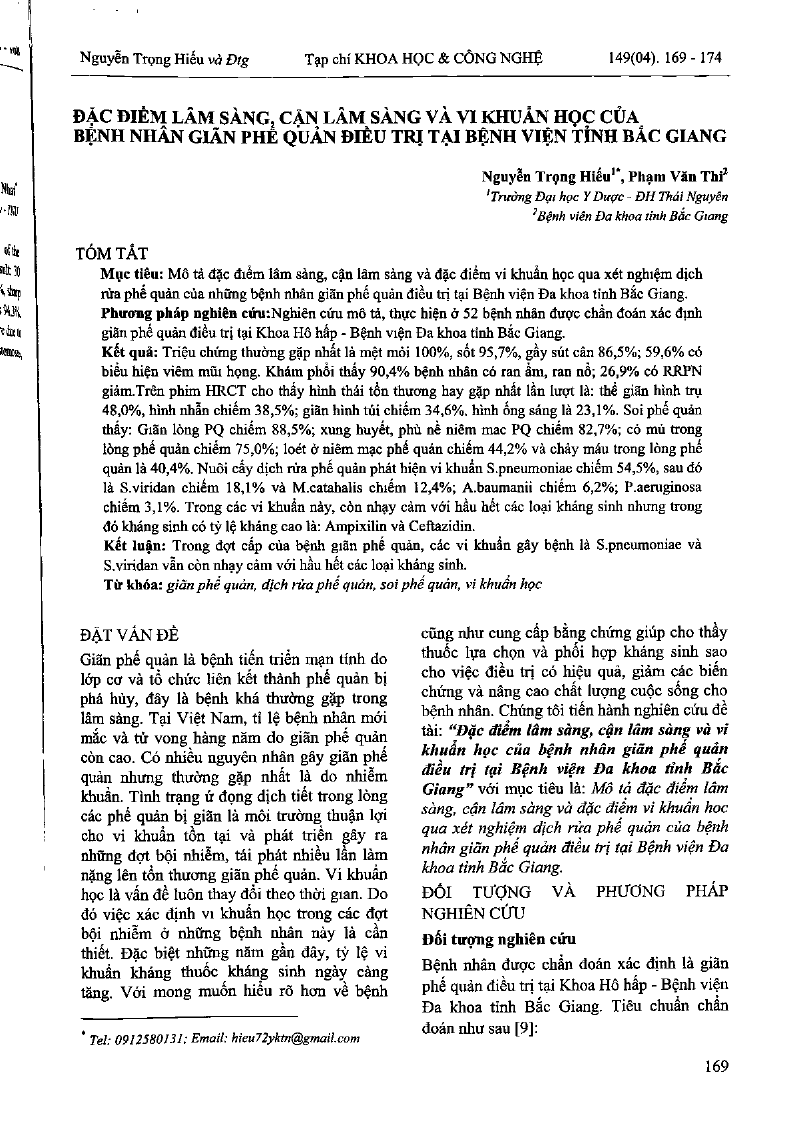
Objective: Describe clinical characteristics, subclinical and characteristic$ of bacteriology laboratory bronchoalveolar lavage of bronchiectasis patients treated at the Bac Giang General Hospital. Research Methodology: The study describes, performed in 52 patients diagnosed determine bronchodilator treatment in the Department of Respiratory - General Hospital in Bac Giang Province. Results: The most common symptom is fatigue 100 percent, 95.7 percent fever, weight loss 86.5 percent; 59.6 percent have expressed nasopharyngitis. 90.4 percent Chest examination shows crackles; 26.9 percent have reduced sound lungs. HRCT showed the most common injuries respectively: 48.0 percent with cylindrical shape, ring shape accounting for 38.5 percent; accounting for 34.6 percent stretch pockets shaped. Light Tubular is 23.1 percent. Bronchoscopy shows: Stretch bronchi accounted for 88.5 percent; congestion, mucosal edema accounted for 82.7 percent; pus inside accounted for 75.0 percent bronchi; Bronchial mucosal ulcers accounted for 44.2 percent and bleeding inside bronchial 40.4 percent. Bronchoalveolar lavage cultures discovered bacterium S. pneumoniae accounts for 54.5 percent, followed by S. viridan 18.1 percent and M.catahalis 12.4 percent; A.baumanii accounted for 6.2 percent; P.aeruginosa 3.1 percent. In these bacteria, also sensitive to most antibiotics but antibiotics which have a high resistance rate is: Ampixilin and Ceftazidin. Conclusion: In patients exacerbations of bronchiectasis, the bacteria are S. pneumoniae and S.viridan still sensitive to most antibiotics.
- Đăng nhập để gửi ý kiến
